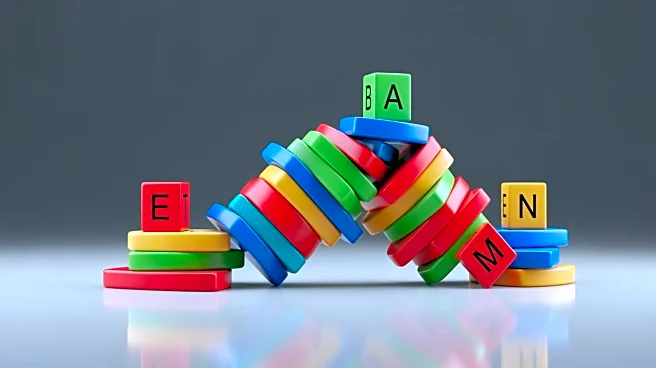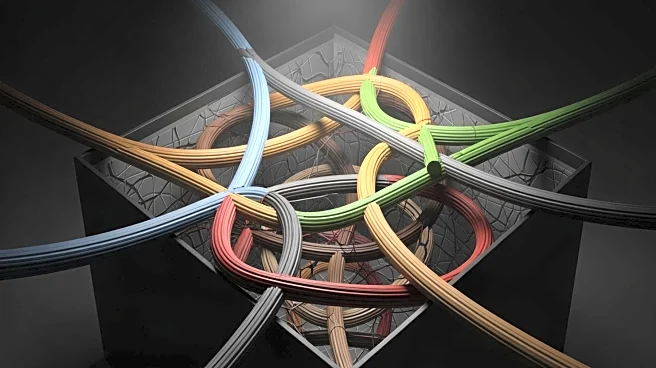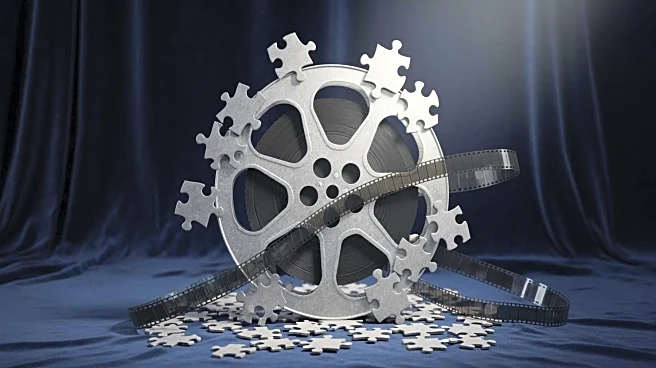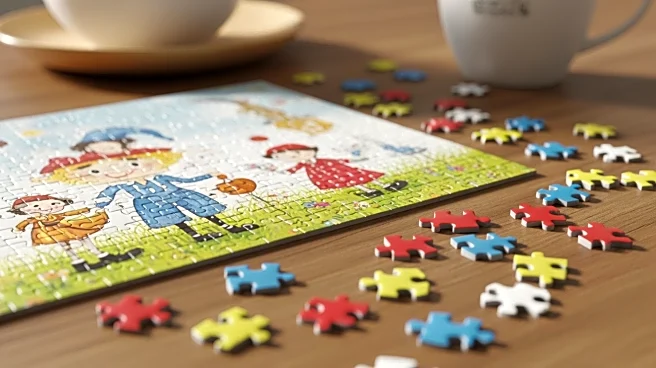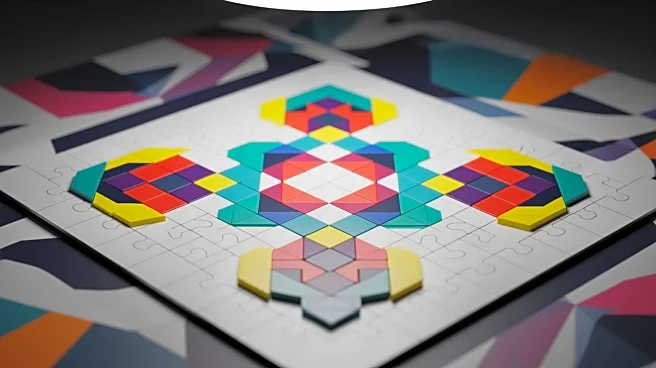What's Happening?
The New York Times crossword puzzle for November 6, 2025, presents a unique theme involving language anagrams. The puzzle, crafted by Mr. Brody, includes clues where the answers are anagrams of the language mentioned. For instance, the clue at 4D, 'Language
in which “kabanica” is 10-Down,' is CROATIAN, with 'kabanica' translating to RAINCOAT, an anagram of CROATIAN. Similarly, at 53A, the clue 'Language in which “drosmigs” is 57-Across' is LATVIAN, with 'drosmigs' meaning VALIANT, an anagram of LATVIAN. The theme is further highlighted by the revealer at 34A, TONGUE TWISTER, which serves as a hint to three pairs of symmetrically positioned answers in the puzzle.
Why It's Important?
This crossword puzzle exemplifies the creativity and complexity that can be achieved in puzzle design, offering solvers a challenging and engaging experience. The use of language anagrams not only tests the solver's linguistic skills but also their ability to recognize patterns and connections. Such innovative themes can enhance cognitive skills, including problem-solving and critical thinking. The puzzle's design reflects the evolving nature of crossword puzzles, which continue to push boundaries and offer new forms of entertainment and mental exercise.
What's Next?
As crossword puzzles continue to evolve, solvers can expect more innovative themes and challenges that incorporate linguistic, mathematical, and cultural elements. Puzzle creators may explore new ways to engage audiences, potentially integrating technology to offer interactive or augmented reality experiences. The popularity of crossword puzzles may lead to collaborations with educational institutions to use puzzles as learning tools, further expanding their impact beyond entertainment.
Beyond the Headlines
The use of language anagrams in crossword puzzles highlights the intersection of language and logic, offering insights into how linguistic structures can be manipulated for entertainment and educational purposes. This approach may inspire further exploration into the cognitive benefits of puzzle-solving, potentially influencing research in areas such as linguistics, psychology, and education.
